A cone-shaped funnel is being rotated with constant angular velocity ω An object is placed on the inner wall of the funnel. The object can freely move along the generatrlx of the cone, but during the motion of the funnel the body is in a state of equilibrium. Is this equilibrium stable or unstable?
Step by step video & image solution for A cone-shaped funnel is being rotated with constant angular velocity omega An object is placed on the inner wall of the funnel. The object can freely move along the generatrlx of the cone, but during the motion of the funnel the body is in a state of equilibrium. Is this equilibrium stable or unstable? by Physics experts to help you in doubts & scoring excellent marks in Class 11 exams.
Updated on:21/07/2023Topper's Solved these Questions
Similar Questions
A horizontally oriented uniform disc of mass M and radius R rotates freely about a stationary vertical axis passing through its centre. The disc has a radial guide along which can slide without friction a small body of mass m. A light thread running down through the hollow axle of the disc is tied to the body initially the body was located at the edge of the disc and the whole system rotated with ann angular velocity ω0. Then by means of a force F applied to the lower and of the thread the body was slowly pulled to the rotation axis. find:
(a). The angular velocity of the system in its final state.
(b). The work performed by the force F.
View SolutionA very small cube of mass m is placed on the inside of a conial funnelof semivertical angle (π/2−θ). The funnel is then set in rotation. If the coefficient of static friction between the cube and the funnel is μ and the centre of the cube is at a distancer from the axis of rotation, what are the largest and smallest angular velocities with which the funnel can be rotated so that the block will not move with respect to the funnel ?
View Solution
Knowledge Check
A particle is at rest with respect to the wall of an inverted cone rotating with uniform angular velocity ω about its central axis. The displacement of particle along the surface up or down, the equilibrium of particle is
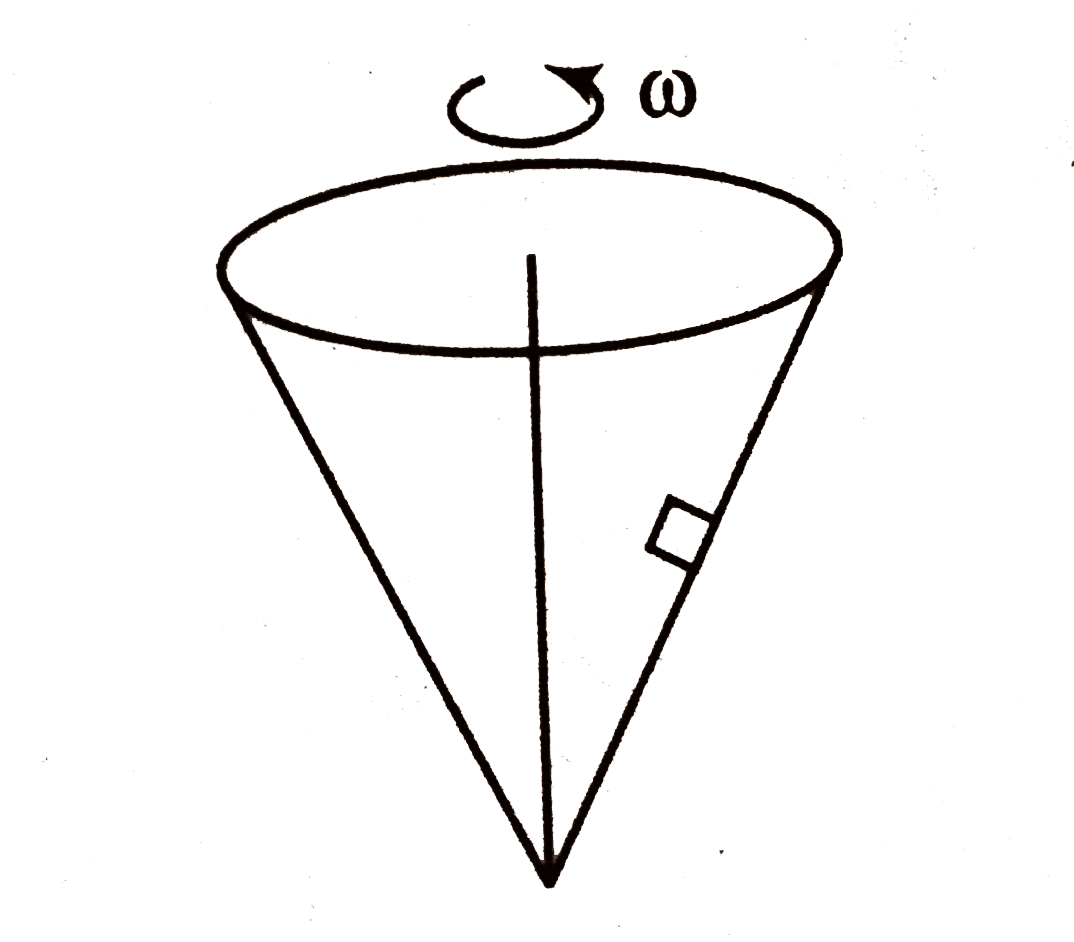 AstableBunstableCneutralDNone of these
AstableBunstableCneutralDNone of theseA very small cube of mass 2kg is placed on the surface of a funnel as shown in figure. The funnel is rotating about its vertical axis of symmetry with angular velocity ω. The wall of funnel makes an angle 37∘ with horizontal. The distance of cube from the axis of rotation is 20 cm and friction coefficient is μ (Take g=10m/s2)
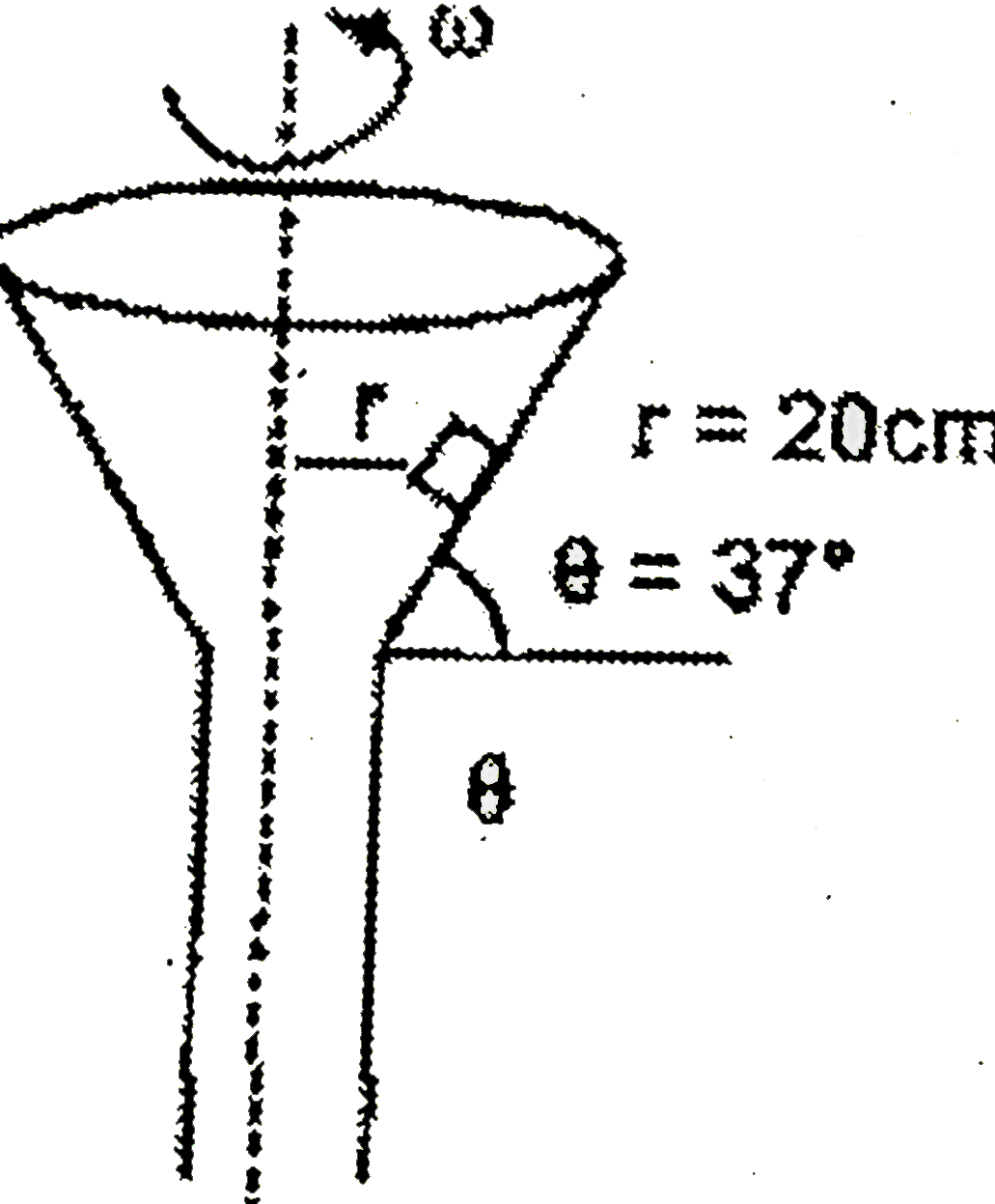
The maximum value of angular velocity for which no relative slipping occur and also direction of frictional force is : (take μ=2/3)A√4253 rad/sec, down the surface of funnelB√253 rad/sec, up the surface of funnelC√259 rad/sec, up the surface of funnelD√259 rad/sec, down the surface of funnelA very small cube of mass 2kg is placed on the surface of a funnel as shown in figure. The funnel is rotating about its vertical axis of symmetry with angular velocity ω. The wall of funnel makes an angle 37∘ with horizontal. The distance of cube from the axis of rotation is 20 cm and friction coefficient is μ (Take g=10m/s2)
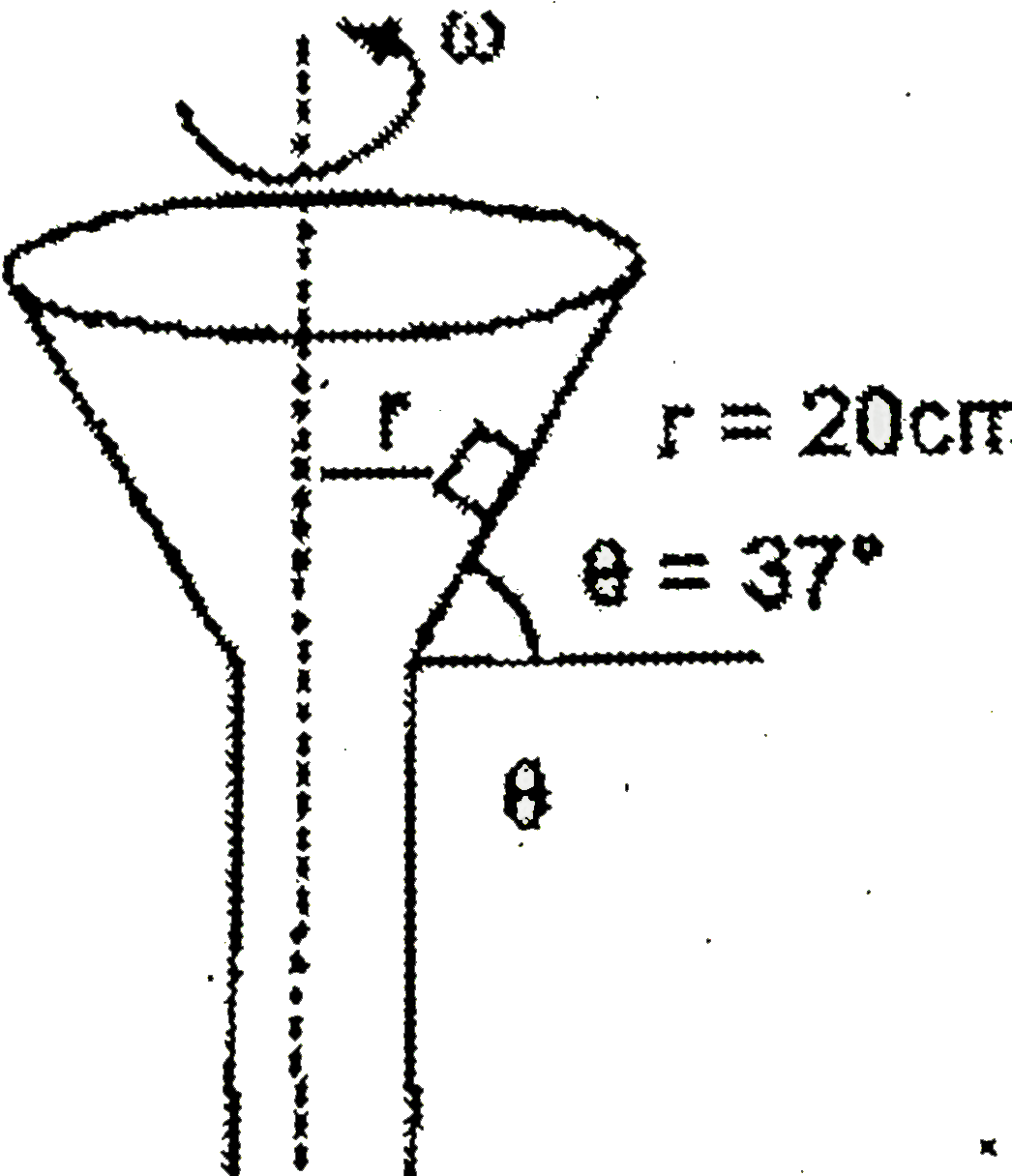
The mimimum value of angular velocity for which relative slipping occurs and also the direction of frictional force acting μ=2/3 :A√259B√153C√925D√325
A wheel is revolving at an angular speed of ω. A pin welded at the circumference of the wheel forces a T shaped body to move up and down. The pin slides freely inside the slot of the yoke as the wheel rotates. The T shaped body is constrained to move vertically by a set of walls
(a) Find the time period of oscillatory motion of point A at the base of the T shaped body
(b) Is the motion of A simple harmonic?

View SolutionA weightless horizontal rigid rod along which two balls of the same mass m can move without friction rotates at a constant angular velocity ω about a vertical axle. The balls are connected by a weightless spring of rigidity k, whose length in the undeformed state is l0. The ball which is closer to the vertical axle is connected to it by he same spring. Determine the lengths of the springs. Under what conditions will be balls move in circles ?
View SolutionA light rod AB is fitted with a small sleeve of mass m which can slide smoothly over it. The sleeve is connected to the two ends of the rod using two springs of force constant 2k and k (see fig). The ends of the springs at A and B are fixed and the other ends (connected to sleeve) can move along with the sleeve. The natural length of spring connected to A is l0. Now the rod is rotated with angular velocity w about an axis passing through end A that is perpendicular to the rod. Take kmω2=η and express the change in length of each spring (in equilibrium position of the sleeve relative to the rod) in terms of l0 and η.
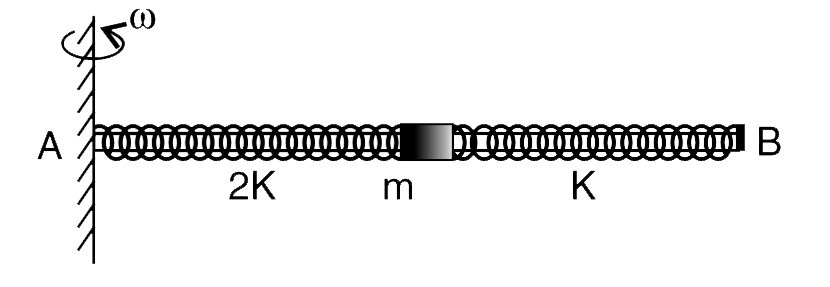
View SolutionThree particles A, B and C each of mass m, are connected to each other by three massless rigid rods to form a rigid, equilateral triangular body of side l. This body is placed on a horizonta frictionsess table (x-y plane) and is hinged to it at the point A so that it can move without friction about the vertical axis through A . the body is set into rotational motion on the table about A with a constant angular velocity ω.
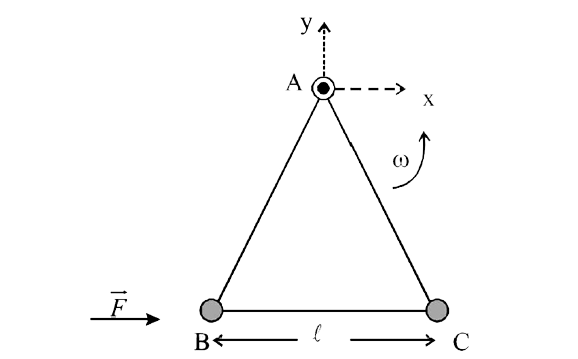
(a) Find the magnitude of the horizontal force exerted by the hinge on the body.
(b) At time T, when the side BC is parallel to the x-axis, a force F is applied on B along BC (as shown). Obtain the x-component and the y-component of the force exerted by the hinge on the body, immediately after time T.
View SolutionA very small cube of mass 2kg is placed on the surface of a funnel as shown in figure. The funnel is rotating about its vertical axis of symmetry with angular velocity ω. The wall of funnel makes an angle 37∘ with horizontal. The distance of cube from the axis of rotation is 20 cm and friction coefficient is μ (Take g=10m/s2)

For what value of ω, there would be no frictional force acting between the surfaces :
View Solution
